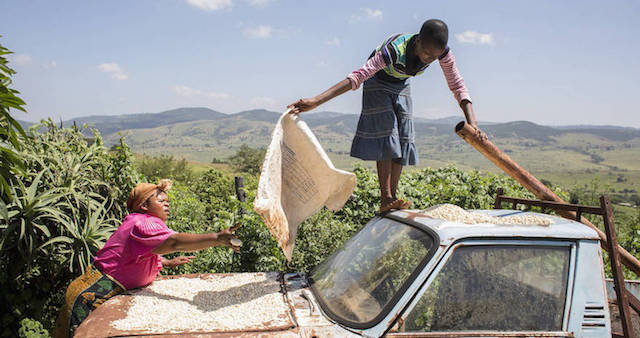By Jutta Wolf | IDN-InDepthNews Report
ROME (IDN | INPS) – A new UN report warns that with a reduced harvest in 2015, the food security situation in North Korea is likely to deteriorate compared to the situation of previous years, when “most households were already estimated to have borderline or poor food consumption rates”.
The report, released by the Food and Agriculture Organization (FAO) of the United Nations on March 9, explains that poor rains coupled with reduced supplies of irrigation water, sharply decreased the 2015 early and main season food crops production.
Heavy rains from late July to early August 2015 reportedly caused some localized floods across North Hamgyong and Rason provinces, located in the northeastern part of the country, causing severe damage to housing and infrastructure, including schools, roads and bridges.
The warning by FAO comes against the backdrop of the 15 member UN Security Council (UNSC) imposing new sanctions aimed at penalizing Pyongyang for its fourth nuclear test conducted on January 6. So far, North Korea has conducted four nuclear tests – in 2006, 2009, 2013 and 2016 – and every one of them in defiance of the international community
The resolution, adopted unanimously by the UNSC on March 3, imposed some of the toughest sanctions on North Korea calling on all UN member states to inspect cargo destined for – and coming from – Pyongyang, in all airport and sea ports. The sanctions include restrictions on the export of coal, iron, iron ore or other minerals, while prohibiting the supply of aviation fuel, including rocket fuel.
In its Crop Prospects and Food Situation report, FAO’s Global Information and Early Warning System (GIEWS) declares that 34 countries, including 27 in Africa, are currently in need of external assistance for food due to drought, flooding and civil conflicts. Until December 2015 the figure amounted to 33. But now Swaziland has been added to the list.
The report points out that drought associated with El Niño has “sharply reduced” 2016 crop production prospects in Southern Africa, while expectations for the harvest in Morocco and Algeria have been lowered due to dry conditions.
Also in areas of Central America and the Caribbean, ongoing dry conditions linked to El Niño may affect sowings of the main season crops for the third consecutive year.
FAO stresses that persistent conflicts in Iraq, Syria, Yemen, Somalia, and the Central African Republic have taken a heavy toll on the agricultural sector, further worsening the humanitarian crisis in those countries. In most cases, the impact of conflict extends into neighbouring countries such as Cameroon and the Democratic Republic of Congo that are hosting refugee populations.
In several countries already in need of external assistance for food, the report finds that conditions generally worsened in the past three months, mainly in the Southern Africa sub-region, where food prices have reached record highs.
Describing the situation in Africa, the FAO report says: Adverse weather reduced 2015 cereal output, resulting in a significant increase in the number of food insecure people in several countries, with conflicts further affecting food security and the agriculture sector in parts.
Planting of the 2016 crops has begun in Central, East and West Africa, while in Southern Africa, with the harvest expected to commence from April, El Niño-associated drought conditions have significantly dampened production prospects, with severe negative implications for food security in the sub-region. In North Africa, 2016 production prospects are mixed, with ongoing drought in Morocco and Algeria lowering production expectations.
In Asia, says the report, the production outlook for the 2016 winter crops is generally favourable, with early forecasts indicating large wheat crops in most countries. The 2015 regional cereal output is estimated above the previous year’s level, mainly on account of increased harvests in China and Turkey that more than offset lower outputs in several countries of the Far East, in particular India.
According to the FAO report, cereal production prospects in early 2016 are mostly favourable, with harvests expected to remain at high levels, mainly as a result of large outputs anticipated in Mexico and South America.
In Central America and the Caribbean, while Mexico is forecast to register an increase in production, elsewhere the continuation of El Niño-linked dry conditions may keep production depressed in 2016, warns the report.
In South America, cereal production in 2016 is forecast to decline slightly from the previous year’s record level, mostly reflecting a contraction in plantings, but is expected to remain well above average. [IDN-InDepthNews – 11 March 2016]
IDN is the flagship of International Press Syndicate.
Photo credit: FAO
2016 IDN-InDepthNews | Analysis That Matters
Send your comment | Subscribe to IDN newsletter
Follow us on Twitter and Facebook:
http://twitter.com/InDepthNews
http://www.facebook.com/IDN.GoingDeeper

